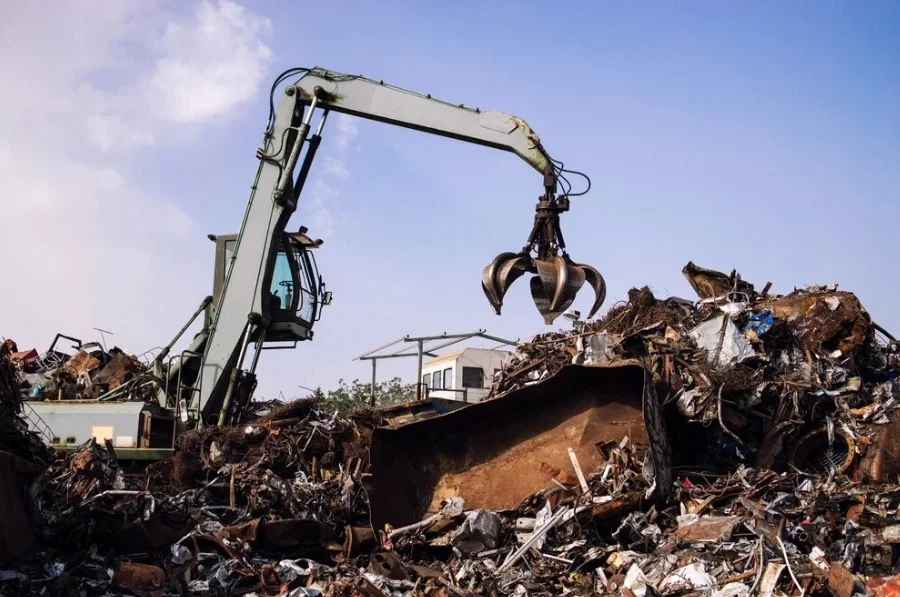In today’s world, where sustainability and environmental responsibility are becoming increasingly important, the role of scrap metal processors and recyclers has never been more crucial. These professionals help to reduce the environmental impact of metal waste while promoting a circular economy by reprocessing scrap metal into valuable resources. This article explores the significance of scrap metal processors and recyclers, their processes, and the benefits they bring to both industries and the environment.
What is a Scrap Metal Processor & Recycler?
A scrap metal processor is a company or individual involved in the collection, sorting, and processing of discarded metal materials. The materials they handle can range from large machinery parts and cars to old appliances and construction debris. After the scrap metal is collected, it is sent to a processing facility where it is sorted, cleaned, and prepared for recycling.
The scrap metal recycler, on the other hand, refers to the broader industry involved in taking processed scrap metal and converting it back into usable products. Through melting and refining processes, scrap metal is transformed into new, high-quality metal that can be used in manufacturing and construction.
Types of Scrap Metals
Scrap metal is typically divided into two broad categories:
-
Ferrous Metals: These metals contain iron and are magnetic. Common examples include steel and cast iron. They are widely used in construction, automotive, and heavy machinery industries.
-
Non-Ferrous Metals: These metals do not contain iron and are not magnetic. Examples include aluminum, copper, brass, and lead. Non-ferrous metals are especially valuable due to their resistance to corrosion and their high demand in industries such as electronics, wiring, and aerospace.
The Scrap Metal Recycling Process
The scrap metal recycling process is designed to efficiently extract valuable materials from metal waste while minimizing waste and environmental impact. Below are the key steps involved:
-
Collection: Scrap metal is collected from a variety of sources, including residential areas, industrial sites, demolition sites, and vehicle recycling centers.
-
Sorting: At the recycling facility, scrap metal is sorted into ferrous and non-ferrous categories. Metals are also separated based on their type and quality.
-
Shredding: Larger pieces of scrap metal are shredded into smaller, more manageable sizes. This step helps facilitate easier transport and processing.
-
Melting: The shredded metal is then melted in furnaces to remove impurities and break it down into a liquid form. This is where metals are purified and can be molded into new shapes.
-
Refining: During the refining process, any remaining impurities are removed, and the metal is ready for reuse in manufacturing.
-
Resale: The processed metal is sold to manufacturers and industries that need raw materials for the production of new goods.
Benefits of Scrap Metal Recycling
1. Environmental Impact: Recycling scrap metal conserves natural resources, reduces energy consumption, and decreases greenhouse gas emissions. Recycling aluminum, for example, uses 95% less energy than producing new aluminum from bauxite ore. Moreover, recycling reduces the need for mining, which can cause habitat destruction and pollution.
2. Economic Advantages: Scrap metal recycling is a highly lucrative industry. The process generates employment and contributes significantly to the economy. By reusing scrap metal, companies save on the costs of extracting and refining raw materials.
3. Reducing Landfill Waste: By recycling metals, less waste is sent to landfills, helping to minimize the environmental burden of overfilled landfills and encouraging more efficient waste management.
4. Circular Economy: Scrap metal recycling is a core aspect of the circular economy, where products and materials are continuously reused and recycled, keeping valuable resources in circulation for longer and reducing the need for new raw materials.
The Role of Technology in Metal Recycling
Advancements in technology have significantly improved the efficiency and effectiveness of scrap metal processing. Automated sorting systems, advanced shredders, and state-of-the-art furnaces make the recycling process faster and more environmentally friendly. Moreover, innovations in metal detection and sorting allow recyclers to extract even higher purity metals from mixed scrap, enhancing the quality of the end product.
Challenges in Scrap Metal Recycling
While scrap metal recycling offers numerous benefits, it is not without challenges. One of the biggest hurdles is the contamination of scrap metal with non-metallic materials, such as plastics, rubber, or hazardous substances like oil. This contamination can complicate the recycling process and reduce the quality of the recycled metal.
Additionally, fluctuations in global metal prices can impact the profitability of scrap metal processing. As the demand for certain metals increases or decreases, recyclers may find it difficult to predict the market and secure a stable income.
Conclusion
Scrap metal processors and recyclers play a vital role in promoting sustainability, reducing environmental impact, and supporting the global economy. Through efficient processes, innovative technologies, and a focus on reusing valuable materials, they help reduce waste and contribute to a circular economy. As industries and individuals continue to prioritize environmental responsibility, the importance of scrap metal recycling will only grow, making these professionals indispensable to our world’s sustainable future.







